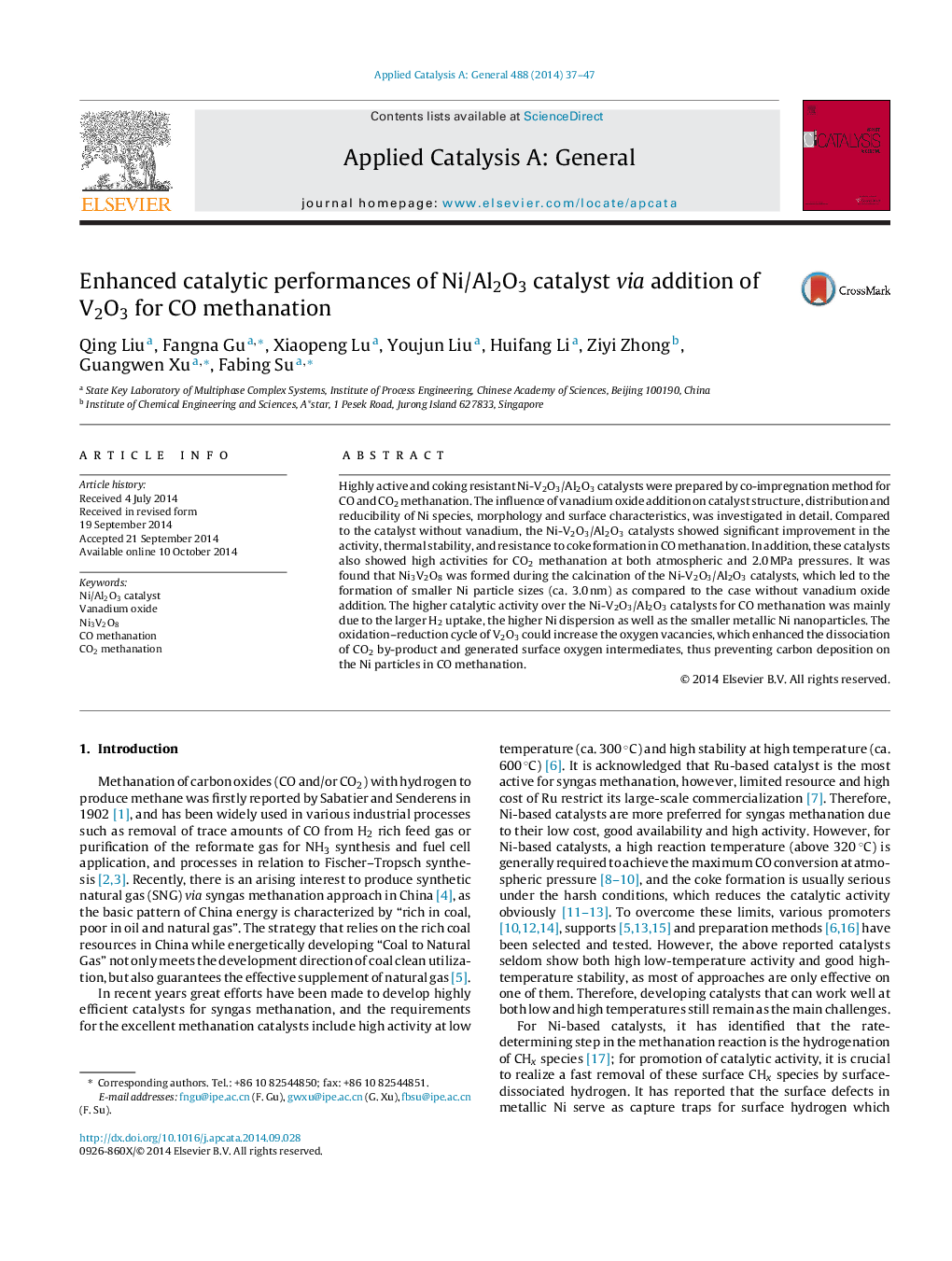| Article ID | Journal | Published Year | Pages | File Type |
|---|---|---|---|---|
| 39490 | Applied Catalysis A: General | 2014 | 11 Pages |
•V2O3 was used as the promoter in Ni-V2O3/Al2O3 catalysts for CO methanation.•Low-temperature activity and thermal stability were greatly improved.•Ni3V2O8 was formed on the as-calcined catalysts.•Ni3V2O8 could facilitate to acquire smaller Ni particle size.•The Ni-V2O3/Al2O3 catalysts were highly active for both CO and CO2 methanation.
Highly active and coking resistant Ni-V2O3/Al2O3 catalysts were prepared by co-impregnation method for CO and CO2 methanation. The influence of vanadium oxide addition on catalyst structure, distribution and reducibility of Ni species, morphology and surface characteristics, was investigated in detail. Compared to the catalyst without vanadium, the Ni-V2O3/Al2O3 catalysts showed significant improvement in the activity, thermal stability, and resistance to coke formation in CO methanation. In addition, these catalysts also showed high activities for CO2 methanation at both atmospheric and 2.0 MPa pressures. It was found that Ni3V2O8 was formed during the calcination of the Ni-V2O3/Al2O3 catalysts, which led to the formation of smaller Ni particle sizes (ca. 3.0 nm) as compared to the case without vanadium oxide addition. The higher catalytic activity over the Ni-V2O3/Al2O3 catalysts for CO methanation was mainly due to the larger H2 uptake, the higher Ni dispersion as well as the smaller metallic Ni nanoparticles. The oxidation–reduction cycle of V2O3 could increase the oxygen vacancies, which enhanced the dissociation of CO2 by-product and generated surface oxygen intermediates, thus preventing carbon deposition on the Ni particles in CO methanation.
Graphical abstractFigure optionsDownload full-size imageDownload high-quality image (268 K)Download as PowerPoint slide
